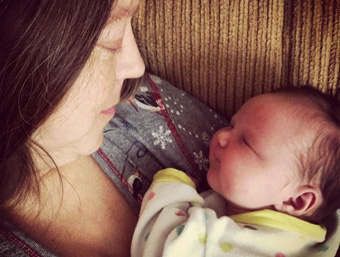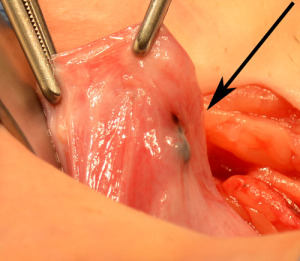 Have you developed menstrual problems after a tubal ligation? If you have had problems after your tubal ligation and feel like your body has gone to ‘hell in a hand basket’ then you are not alone.
Have you developed menstrual problems after a tubal ligation? If you have had problems after your tubal ligation and feel like your body has gone to ‘hell in a hand basket’ then you are not alone.
There are many other women who have had similar experiences.
Many women report a variety of changes occurring after a tubal ligation. There are several gynecologic conditions that may be the cause of what you are experiencing.
If you are having problems after tubal ligation then you deserve a thorough evaluation by your doctor.
For some women the problems are caused by things other than the tubal ligation. For others tubal ligation can be the primary cause.
Menstrual problems after a tubal ligation
Previously, we introduced the topic of Post Tubal Ligation Syndrome (PTLS) as a cause of problems that can occur after a tubal ligation.
It should be clearly pointed out that many women who experience problems after a tubal ligation will not have Post Tubal Ligation Syndrome.
If women have problems after a tubal ligation they primarily have two complaints: changes in their periods (menstrual pattern) and/or more painful periods. If you have had a tubal ligation and are experiencing these complaints, you could be suffering from an undiagnosed medical condition.
To determine if you have an underlying medical condition causing the above symptoms, it is helpful to be aware of the medical words for menstrual problems.
Medical terminology for menstrual problems
The medical terminology for changes in the frequency or amount of bleeding with your periods are:
• Oligomenorrhea (infrequent periods…ie you skip)
• Hypomenorrhea (lighter periods)
• Hypermenorrhea or menorraghia (heavier periods)
Menstrual periods that are infrequent or irregular is termed oligmenorrhea. Periods that are scanty in amount of bleeding is called hypmenorrhea. Periods that are heavier in the amount of bleeding is termed hypermenorrhea or menorraghia (both terms refer to heavier periods).
The medical terminology for painful periods is dysmenorrhea.
Dysmenorrhea is divided into two categories:
• Primary (painful since puberty)
• Secondary (painful since you became older)
More painful periods developing after a tubal ligation would be categorized as secondary dysmenorrhea.
We frequently observe tubal ligation as the cause of endometriosis in many of our tubal reversal patients. These women have dysmenorrhea …or more painful periods after their tubal ligation.
For more information: Can tubal ligation cause problems?
Medical causes of menstrual disorders
There can be many medical causes for oligomenorrhea, hypomenorrhea, or hypermenorrhea:
Uterine fibroids
Endometrial polyps
Adenomyosis
Uterine infections
Thyroid abnormalities
Endometrial hyperplasia
Endometrial cancer
Blood abnormalities (platelet disorders)
Ovulation disorders?
Polycystic Ovarian Syndrome?
Pregnancy*
Anorexia nervosa*
Congenital adrenal hyperplasia*
Perimenopause?
Pituitary abnormalities?
* Marked items are mostly associated with oligomenorrhea (skipped periods)
? Marked items can be associated with both oligo and hypermenorrhea
Most women who develop abnormalities in their menstrual cycle after a tubal ligation will not have a serious medical condition. Most will have hormonal abnormalities, uterine fibroids, or anovualtion as the cause for changes in their menstrual cycle. These are common conditions that occur as a person either ages or experiences significant changes in weight.
Dysmenorrhea or painful menstrual period problems
There can be many medical causes for dysmenorrhea. These are the major causes of secondary dysmenorrhea:
Gynecologic disorders
Endometriosis
Adenomyosis
Ovarian cysts
Pelvic adhesions
Pelvic inflammatory disease
Uterine polyps
Congenital obstructive Müllerian malformations
Cervical stenosis
Nongynecologic disorders
Inflammatory bowel disease
Irritable bowel syndrome
Uteropelvic junction obstruction
Psychogenic disorders
Secondary dysmenorrhea can be experienced by many women. The most common causes are endometriosis, adenomyosis, and ovarian cysts. Causes of secondary dysmenorrhea can sometimes be difficult to identify. Sometimes, women may need to be referred to other medical specialists to diagnose the cause of secondary dysmenorrhea.
Changes in one’s menstrual cycle are common and can also occur after a tubal ligation procedure. When a woman has a tubal ligation and then develops any of the symptoms discussed above, it is tempting to attribute them to Post Tubal ligation Syndrome; however, there may be other underlying medical or gynecological conditions responsible for these changes.
The tubal ligation reversal experts at A Personal Choice recommend you see your medical provider if you develop any of the above symptoms after a tubal ligation. The purpose of your visit will be to diagnose any medical conditions which could the cause of your symptoms. If your doctor is unable to determine any medical explanation or if your symptoms are more extensive than those listed above, the doctor might attribute your symptoms to depression, anxiety, post traumatic stress disorder, or regret over your prior decision to have a surgical sterilization.
Read Our Seris of 14 Articles On PTLS
This is the third article of a fourteen part series about Post Tubal Ligation Syndrome.
Our next article is Guilt or Regret About Tubes Tied.
Comment by Dr. Monteith

Dr Monteith A Personal Choice Raleigh NC
The terms introduced in this article – such as oligomenorrhea, hypomenorrhea, hypermenorrhea, and dysmenorrhea – are descriptive medical terms for common menstrual disorders. When they occur, they deserve a thorough medical evaluation because there there are many underlying causes or diagnoses for these conditions.
More information: Can tubal ligation cause symptoms?
The question that seems to be at issue regarding Post Tubal Ligation Syndrome is this: when symptoms develop after a tubal ligation, are they attributable to the tubal ligation itself or to some other underlying condition?
More information: Learn more about Dr Monteith
If no other underlying causes are found, then is PTLS the diagnosis remaining by exclusion?
If a doctor does not believe in the existence of PTLS and no underlying medical or gynecologic diagnosis is evident, is attributing the symptoms to depression, anxiety, post traumatic stress disorder, or sterilization regret reasonable, accurate, or sufficient?
Menstrual problems after tubal ligation? Considering reversal surgery?
If you have been experiencing problems that started soon after getting your tubes tied then you should see your doctor for evaluation.
If your doctor is unable to provide a helpful diagnosis then you should consider tubal ligation reversal surgery.
A Personal Choice is a tubal surgery center dedicated to corrective surgery of the fallopian tubes. They are located in Raleigh North Carolina and specialize only in fallopian tube surgery. Patients travel from across the United States to have surgery at A Personal Choice.
If you want to know more about what to expect during reversal surgery then the following video will be helpful for you.
Give them a call at (919) 977-5050 if you have any questions about getting started on the tubal surgery journey!











